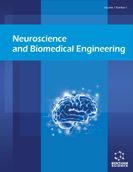Abstract
Background: Doppler ultrasound is an important diagnostic tools used to view blood flow through the vessels. For the reconstruction we need to collect a large data to get a Doppler image with high performance. Objective: In this work, we propose an algorithm that combines compressed sensing (CS) and parallel computing to reconstruct the Doppler ultrasound signal and reduce the reconstruction time.
Methods: Compressed sensing is a new sampling methods, appeared a few years ago, but it was used in different practical applications such as speeding up MRI scans by acquiring less data to achieve a given amount of resolution and Doppler ultrasound signal reconstruction using fewer measurements to achieve an image with high quality. The main idea of parallel signal/image reconstruction is to divide the main tasks into subtasks and solve them concurrently, in such way that total time can be divided between total tasks.
Results: The reconstruction performed using Matlab on a personal computer running a Windows 7 operating system. Real and simulated Doppler data were used for the proposed algorithm validation. The result shows that as the number of cores increased the process time decreased. The image quality from serial programming is same as that a achieved by using parallel programming. The best quality of the image gain is when the 1-norm algorithm used. The lowest reconstruction time was obtained by combining the regularized orthogonal matching pursuit (ROMP) algorithm and parallel computing, with a reconstruction time less than 0.016 seconds when four cores were used and less than 0.034 seconds when two cores were used for 5% of the data. When 80% of the data used the reconstruction time for two cores was 0.109 and for four cores the time was 0.067. The best efficiency was achieved by parallelizing ROMP in two and four cores and the lowest efficiency achieved by parallelized CoSaMP algorithm. The excitation cost decreased with decreasing the numbers of cores. In all the reconstruction algorithms used to perform this work, four cores gave a lower excitation cost than those obtained with two cores. The lowest excitation cost was achieved via ROMP when four cores and fewer measurements were used (0.06) and higher cost gained by using 1-norm algorithm (12.42). The ROMP combined algorithm gives best result among all combined reconstruction algorithm used.
Conclusion: We have demonstrated that it is possible to combine compressed sensing and parallel computing to reconstruct the Doppler ultrasound signal. The result of reconstructing the Doppler signal shows that combined algorithm leads to a reduction in reconstruction time and gives an image in realtime while reducing the computation complexity without affecting the image quality.
Keywords: Doppler ultrasound signal, compressed sensing, multi-core processor, parallel computing, reconstruction, parfor.
Graphical Abstract
 16
16

